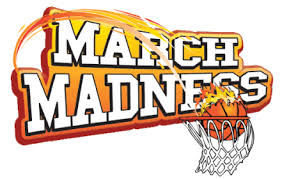College Basktball Handicapping – Keys To NCAA Tournament Success
How to Evaluate Teams and Keys to NCAA Tournament Success
With the postseason tournaments upon us including the big dance, NCAA tournament, the astute handicapper, bettor and fan can better position themselves for success in betting games or tournament pools by knowing the strengths and weaknesses of both conferences and teams..
Here are some thoughts and key considerations in handicapping college basketball and tournament play. While there have been changes in the college game over the years, and the NCAA wants more scoring in todays college game, the fundamentals of college basketball remain the same when evaluating the teams and match-ups. I have relied on the these fundamentals in many of my game analysis while using statistical profiles, situations and scheduling in the match-up analysis. Add in the emotional and energy component along with coaching personalities and profiles, injuries and other intangibles plus a touch of relevant technical analysis and we’ve been able to produce some outstanding documented results and profits for clients over the years and especially this season while crushing college hoops the past two months for Members ( including 19-7 on Top Play 20*, 2-unit plays ).
 In the elimination format of the NCAA Tournament and any postseason game, one poor stretch of play or a scoring drought can quickly end a team’s season. Likewise, a team that gets hot from the 3-point arch can ride that momentum to a victory. When handicapping a contest, the biggest statistical discrepancy can come in 3-point shooting, yet it is often the hardest to predict. Evaluating how a team and players will perform under pressure in an elimination format can be a challenge. The difficulty for many handicappers and bettors is breaking down the match-ups with less familiar teams. Evaluating the statistical information, interpreting the data and analyzing how teams and players will perform when facing a different level of class opponent often keeps bettors away from unknown teams. That’s where the intangibles of coaching, momentum, injuries, experience, leadership and team chemistry play a part. And of course the great equalizer in the point spread. The most value in the postseason party lies in the opening week of action, and it’s up to us to determine where the value lies along with the strengths and weaknesses of the team. The technical side ( relevant patterns ) of the equation comes in evaluating situations and past performance such as a team’s strength of schedule, performance playing on the road, results and level of play versus quality teams and understanding contrary patterns.
In the elimination format of the NCAA Tournament and any postseason game, one poor stretch of play or a scoring drought can quickly end a team’s season. Likewise, a team that gets hot from the 3-point arch can ride that momentum to a victory. When handicapping a contest, the biggest statistical discrepancy can come in 3-point shooting, yet it is often the hardest to predict. Evaluating how a team and players will perform under pressure in an elimination format can be a challenge. The difficulty for many handicappers and bettors is breaking down the match-ups with less familiar teams. Evaluating the statistical information, interpreting the data and analyzing how teams and players will perform when facing a different level of class opponent often keeps bettors away from unknown teams. That’s where the intangibles of coaching, momentum, injuries, experience, leadership and team chemistry play a part. And of course the great equalizer in the point spread. The most value in the postseason party lies in the opening week of action, and it’s up to us to determine where the value lies along with the strengths and weaknesses of the team. The technical side ( relevant patterns ) of the equation comes in evaluating situations and past performance such as a team’s strength of schedule, performance playing on the road, results and level of play versus quality teams and understanding contrary patterns.
We can discuss quality guard play, interior post presence, 3-point and free throw shooting, pace of play and a go-to-guy in any match-up. But in so many contests, the team that defends the best, rebounds and takes care of the basketball can often overcome the opponent or their own off-shooting night. So here are some of the fundamentals to evaluate in upcoming games and postseason play.
Defense: While scoring continues to get headlines and highlights, teams that play defense and minimize turnovers and second chance opportunities will win more games. Coaching often plays a part in a team’s discipline on defense, and teams that play hard on the defensive end are worth supporting. The type of defense a team plays may vary from game to game with man-to-man, zone or full court pressure. Teams that have quality athletes and flexibility to adjust are your best bets. After a full season of results, the overall body of work and numbers should tell the story. Key stats to analyze are defensive field goal percentage and turnovers forced, with overall points-per-game allowed also of note, especially versus quality teams. I prefer to utilize stats from conference play in the stronger  conferences, and look at how teams outside of the top 40 or so performed against better competition. Look at a team’s offensive tempo, and if a team has an efficient offense with a relatively high number of attempts and still plays solid defense, you likely have a team worth plenty of support.
conferences, and look at how teams outside of the top 40 or so performed against better competition. Look at a team’s offensive tempo, and if a team has an efficient offense with a relatively high number of attempts and still plays solid defense, you likely have a team worth plenty of support.
Offense: With the top teams playing in the NCAA Tournament, many teams are capable on the defensive end of shutting down one scoring option. Look for teams with scoring balance, both from the perimeter and inside. Quality depth can be a factor, but teams will rely on their top players at crunch time. Recognize a team’s assist-to-turnover ratio. The ability to play in the half court with an efficient offense and balanced scoring options will separate teams, especially in the second half as some teams start to wear down. Thus, unselfish teams that value and take care of the basketball and give their teammates good looks will ultimately win out with productive shooting.
Rebounding: One of the most overlooked areas in handicapping is evaluating a team’s ability to rebound the basketball. The key here is rebounding margin, which goes together with a team’s defensive field goal percentage. Teams that are physical, strong and athletic on the boards also create more fouls on the opponent and get to the free throw line more often. The top teams will always be strong in these areas, and the ability to control the boards and minimize second-chance points will go a long way in determining whether a team advances or not.

 Twitter
Twitter Facebook
Facebook